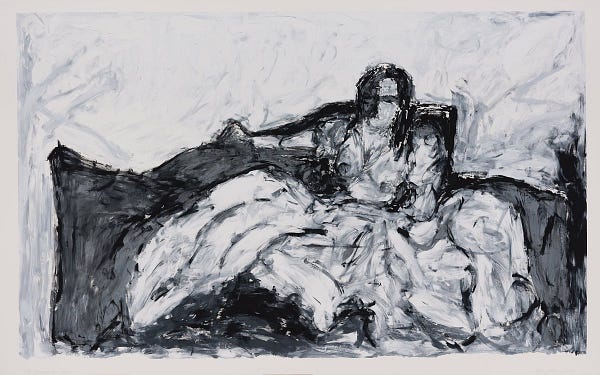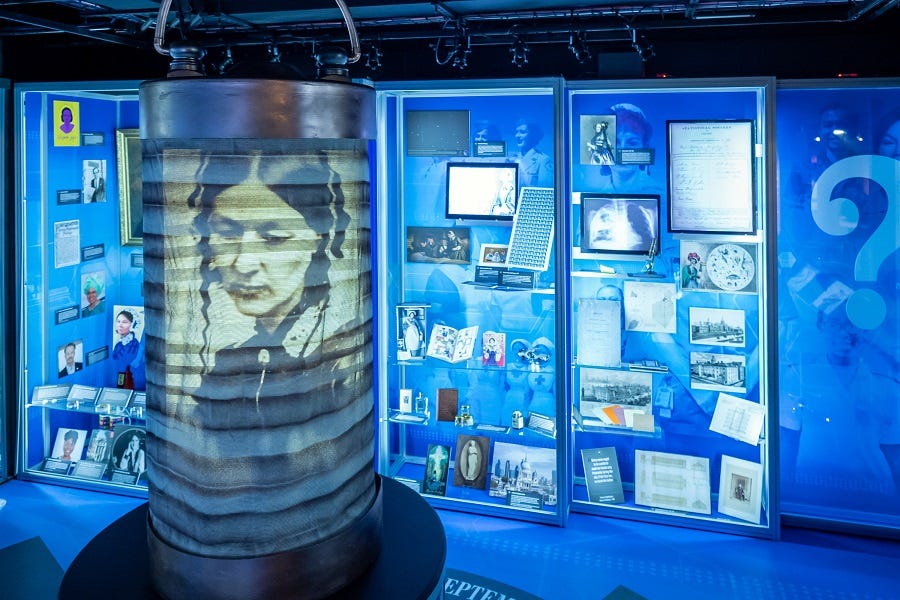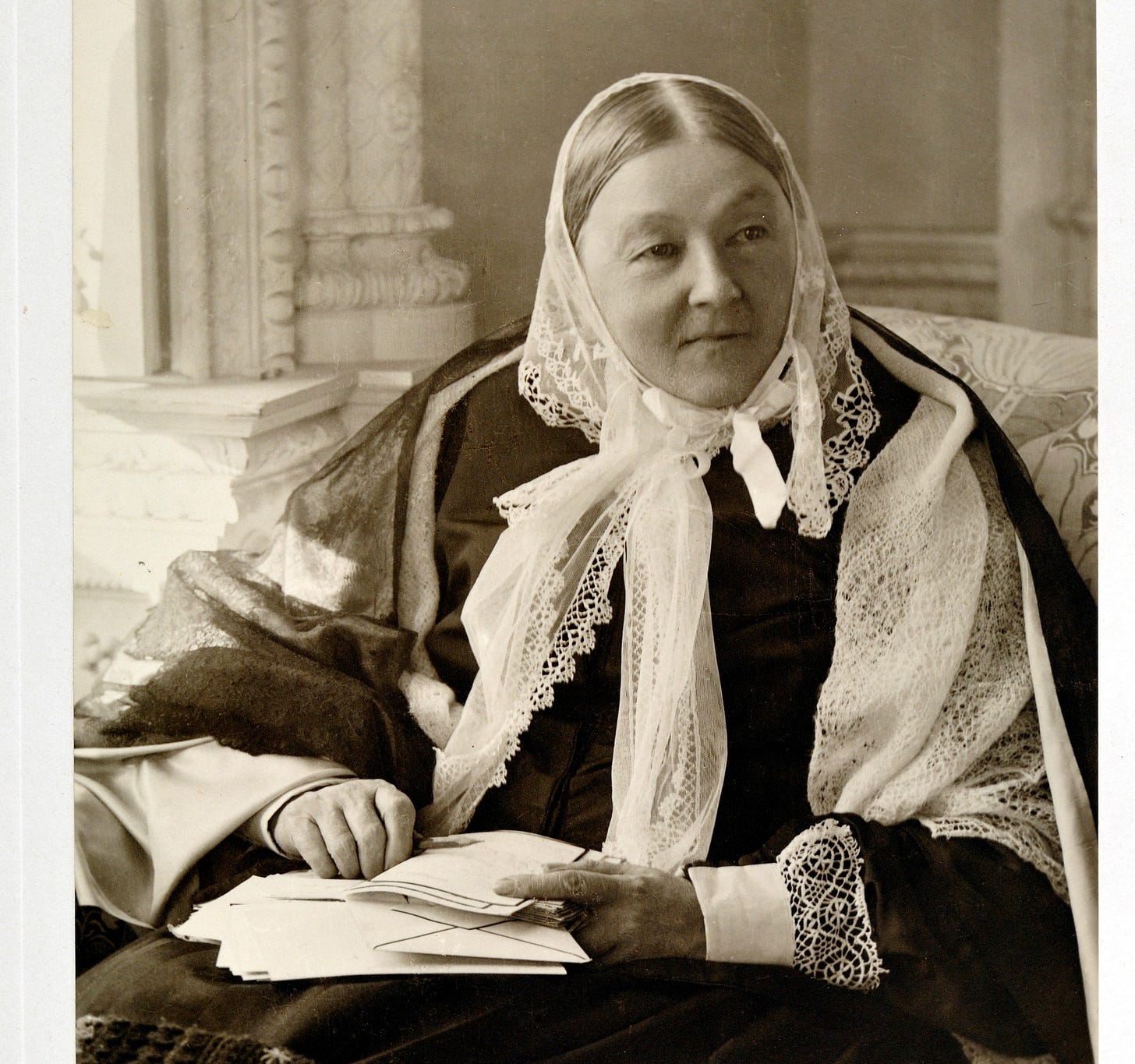Happy Wednesday.
It’s been a little while since I last sent an interview edition of this newsletter (apols). But I’m pleased to say they’re back and today’s interview is the result of some actual good news, which we don’t get enough of. The wonderful Florence Nightingale Museum is finally reopening after a torrid two years. I’ve chatted to David Green, the Museum’s Director, to discuss their pandemic fight for survival, but also why they’re now on a nationwide hunt for a new home.
Speaking of post-pandemic returns, at the weekend I was lucky enough to visit the London Art Fair which was back in Islington after last year’s hiatus. There were some really great pieces on show - prints especially - and it did feel like we’d come through the covid-tunnel. And that’s important as the art world needs physical events like fairs to thrive. I spoke to David Kovats - whose new Covent Garden gallery was making its debut at the fair - who told me that when it comes to young galleries especially, exposure is everything. “Art fairs are the best option to present our programme to the broadest network of collectors and industry professionals. Some meetings have been in the making for 18 months, so these four days allowed us to strengthen our network significantly.” Long may IRL continue.
Now read on!
Maxwell
barometer
What’s heating up and cooling down in the world of museums, art and galleries this week:
heating up
Immersive exhibitions have been around for a while, but now they are quite literally everywhere. There’s the new show by the French artist Dominique Gonzalez-Foerster at the Serpentine Gallery, an immersive Avicii experience has just opened in Sweden, and Chicago is getting one dedicated to Prince later this year. And the Van Gogh Exhibit: The Immersive Experience is currently showing in *checks notes* 18 cities across Europe and North America. They’ll start out-numbering Prets next.
cooling down
Not a good week for Netflix as its incredible, ten-year streak of subscription growth came to an abrupt end. Its share price fell almost 40 per cent, tumbling $300bn since November, and it’s now axing expensive drama and reality shows. Perhaps they should look to the world of museums for more financially sustainable content? Secrets of the Museum, which follows the work of the V&A, is currently on series three on the BBC. It might not pull in millions of viewers, but it’s a hell of a lot cheaper to make than the $30 million PER EPISODE being lavished on Stranger Things series 4. Just a thought.
curated
maxwell museums’ curated list of what’s new to see, do, watch, read and more - from the UK to across the globe.
NEW EXHIBITION
Tracey Emin: A Journey To Death
Carl Freedman Gallery, Margate, until 19 June
A comprehensive solo exhibition of brand new prints, large-scale monotypes and bronze sculptures made in response to Emin’s cancer diagnoses.


NEW SERIES
Great British History Hunters
More 4, Wednesday 21:00
Delve into the fascinating world the British Museum's Portable Antiquities Scheme and meet the passionate metal detectorists finding incredible discoveries. This first episode tonight features one of the highlights of the current World of Stonehenge exhibition: a 3,000-year-old gold sun pendant.
NEW PODCAST SERIES
Meet Me at the Museum
Apple Podcasts | Google Podcasts | Spotify
Art Fund’s museum-visits-with-famous-faces podcast is back for its seventh (7th!!) series. The latest episode see’s Derry Girls’ Sister Michael-actor Siobhán McSweeney tour the Wellcome Collection.
NEW EXHIBITION
Walter Sickert
Tate Modern, from tomorrow
The first major retrospective of Sickert at Tate in over 60 years, this exhibition explores how he had an often radical, distinctive approach to setting and subject matter. It’s had great reviews.
interview
Here’s some good news - the Florence Nightingale Museum is finally reopening. In one of the most ironic twists for the sector during the pandemic, it was the museum dedicated to the founder of modern nursing and based in one of London’s biggest hospitals that was hardest hit. Just ten days after opening a major show celebrating Nightingale’s bicentenary in March 2020, it was forced to close due to lockdown and a collapse in visitors. In January 2021, it was announced the museum would be mothballed. It was touch and go whether they would ever open again.
Fifteen months on - and thanks to a big fundraising effort - the museum will return to regular five-days-a-week opening from May. The first day coincides with Nightingale’s 202nd birthday and International Nurses’ Day. To celebrate the reopening, maxwell museums speaks to the Museum’s Director David Green to find out about their successful fight for survival, what’s new for visitors, and why the Museum will soon be finding a new home (that might not be in London).
***
Welcome back! How does it feel to finally be reopening the Florence Nightingale Museum?
Thank you……It’s exciting, and what we’ve been looking forward to! Whilst we’ve been able to welcome schools and pre-booked groups over the past few months - and hold some ‘Open Days’ - my colleagues and I have very much missed the buzz that throwing the doors open on a daily basis brings. We really can’t wait to welcome everyone again, not least because those who visit so often have inspiring tales to tell. I’m really proud of the team for getting to this point. We’ve had to demonstrate real resilience and determination. I’m truly grateful to everyone who has supported us.
What's new for visitors?
We’ve been busy creating a new display showcasing Nightingale’s pioneering work using infographics. It’s a valuable but lesser-known part of her career. We’ve also added further content to the ever-popular ‘Crimean War’ gallery, where Nightingale’s famous lamp is displayed. These will be linked with a STEM-themed trail, which is intended for kids, but I suspect we will see a few adults enjoying too!
Just 8 days before closure we opened our Nightingale in 200 Objects, People and Places bicentenary exhibition. We are aware this will be ‘new’ to many visitors, but it has been refreshed, reflecting upon the tragedies and triumphs of the past two years.

What was the impact of the first pandemic on the museum - how serious did it get?
Our biggest challenge was similar to many independent museums. Over 90% of income literally comes through the front door, in the form of admissions and retail revenue. This could be up to £3k per day. It’s an amount which relies heavily on international tourists, who’s spend-per-head is understandably higher than domestic visitors.
We started to forecast challenges as early as January 2020 when groups from Asia began to cancel trips due to covid. Our museum was hit particularly early and hard as many of our group-visits are clinical professionals, who were involved in fighting the virus. Similarly, the challenges have lasted longer, with some visitors reluctant to visit a hospital site.
Looking back on the first lockdown, in hindsight would you have you done anything different?
As you would expect this is a question my board of trustees and I have considered many times, including evaluating our own performance, and being scrutinised by insurance assessors. I’m proud to say we would very much make the same decisions again. Essentially, pragmatism was key. We secured the collection from threats, protected our team, and maintained an honest and open dialogue with stakeholders. I’m proud that I made the decision to close before the first lockdown was enforced, as keeping the staff safe was my biggest priority - and nobody got sick.
Has the pandemic reinvigorated the Museum's mission?
I’d certainly say so. The museum works very closely with the nursing profession, and the wider NHS, who have seen a huge and unprecedented interest in careers. Visitors tell us that we help inspire and support those career journeys. Just days before our closure, when we launched our Nightingale bicentennial events programme, we announced our plans to transition to become the ‘Florence Nightingale Museum of International Nursing’ in the future. This now feels even more poignant. More and more we celebrate not only Nightingale’s achievements, but also her amazing global legacy.
What's your hope for the Museum for the rest of the year?
My hope for the year is that we will deliver against our visitor and income targets, but more importantly welcome back old friends and make many more too. The museum is now offering its full range of service again, including events, recognising that these allow us to connect with many different audiences. The sad thing about the pandemic was that we had made so many friends in the run up to Nightingale’s bicentenary, but then only saw them on zoom! It will be great to welcome everyone back to the museum and begin planning new engaging projects, including a new ‘Military nursing’ gallery.
And longer term, what's the ambition for the Museum. Perhaps a new, bigger home?
Between 2017 and 2020 visitation doubled, and we are confident we can continue to grow. We know we can do more meaningful work in the community and digitally, once we find the right base to work from.
Sadly, with our tenancy at St Thomas’ Hospital ending in 2026, our trustees and I have been looking for a new venue that will better serve our needs. This has been a priority of my role since I was appointed in 2017. Negotiations for a new venue had been progressing well before the pandemic, but sadly the world changed, and these plans have been thwarted. St Thomas' have been fantastic landlords, but they need the space to improve patient services and we need to offer more modern facilities. The search goes on and its truly nationwide. It doesn't have to be a hospital. We are open to offers! What is important is accessibility, connectivity and a mutually respectful relationship.
The Florence Nightingale Museum reopens on Thursday 12 May
Enjoy the newsletter? Please forward to a pal. It only takes 6 seconds. Writing it takes me 6 hours.
And fancy making a donation to support my 6 hours of work? You can do that here. Thank you.




